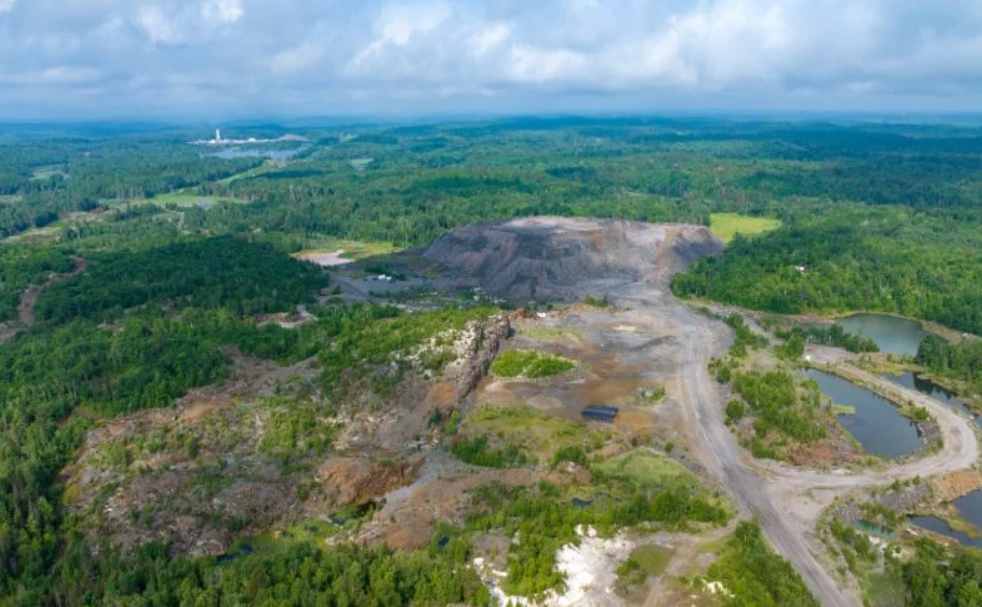
Sign up for daily news updates from CleanTechnica on email. Or follow us on Google News!
Money to clean up steel, ammonia, chemicals, and other sectors dropped by more than half in 2024 compared with 2023, according to a report by Canary Media. Global investment in efforts to decarbonize heavy industries totaled just $31 billion in 2024, making it a tough year for hydrogen-based steel making and carbon capture and storage. Money for clean industry related projects fell by nearly 60 percent last year compared with 2023, even as investment in the broader energy transition grew to a record $2.1 trillion in 2024, according to BloombergNEF.
The diverging outcomes reflect a “two-speed transition” emerging in markets around the world, according to the research firm. The vast majority of today’s energy transition investment is flowing to more established technologies, such as renewable energy, electric vehicles, energy storage, and power grids. But efforts to slash emissions from heavy industrial sectors — including steel, ammonia, chemicals, and cement — continue to face more fundamental challenges around affordability, maturity, and scalability.
Green Steel Investments Led Downward Trend
Clean steel projects took the biggest hit in financial commitments, with investment falling to around $17.3 billion in 2024, down from $40.2 billion the previous year, BNEF found. That category includes new furnaces that can use hydrogen instead of coal to produce iron for making steel. Green hydrogen made from renewables remained costly and in scarce supply, leading producers like Europe’s ArcelorMittal to delay making planned investments in hydrogen-based projects. Electric arc furnaces — which turn scrap metal and fresh iron into high-strength steel using electricity — are also considered clean steel projects. Mainland China saw a sharp decline in funding for new electric furnaces as steel demand decreased in its automotive and construction industries.
Investment held flat in 2024 for new facilities that use low emissions hydrogen instead of methane gas to produce ammonia, which is used primarily in fertilizer but can be turned into fuel for cargo ships and heavy duty machinery. However, funding declined last year for circular economy projects that recycle plastics, paper, and aluminum, as well as for bio-based plastics production.
BNEF found that, unlike in 2023, few developers of new clean steel and ammonia facilities allocated capital for “co-located” hydrogen plants and renewable energy installations. Likewise, fewer commitments were made to install carbon capture and storage units on polluting facilities like cement factories and chemical refineries. Whether these investment trends will continue in 2025 depends largely “on a few crucial policy developments in key markets,” Allen Tom Abraham, head of sustainable materials research at BNEF, told Canary Media.
In the United States, companies are awaiting more clarity on the future of federal incentives for industrial decarbonization. The Biden administration previously directed billions of dollars in Inflation Reduction Act funding to support cutting edge manufacturing technologies and boost demand for low-carbon construction materials — money that is now entangled in the new administration’s federal spending freeze.
Investors are also watching to see what unfolds this month in the European Union. Policymakers there are poised to adopt a “clean industrial deal” to help the region’s heavily emitting sectors — like steel, cement, and chemicals — slash emissions while remaining competitive. In China, the government is drafting new rules aimed at easing the country’s overcapacity of steel production, which could impact the deployment of new electric arc furnaces. “Positive developments on these initiatives could boost clean-industry investment commitments in 2025,” Abraham said.
There Is Good News
Despite disappointing results for heavy industries, investment in the low carbon energy transition worldwide grew 11 percent in 2024 to a record $2.1 trillion according to Bloomberg. Growth was driven by electrified transport, renewable energy, and power grids, which all reached new highs last year, along with energy storage investments. While overall investment in energy transition technologies set a new record, the pace of growth was slower than in the previous three years, when investment jumped by 24 to 29 percent annually.
Electrified transport remained the largest investment driver, reaching $757 billion in 2024. This figure includes spending on passenger EVs, electric bikes and trikes, commercial electric vehicles, public charging infrastructure, and fuel cell vehicles. Investments in renewable energy hit $728 billion, which includes investment in wind — both onshore and offshore — solar, biofuels, biomass and waste, marine, geothermal, and small hydro. Finally, investment in power grids totaled $390 billion, which includes investment in transmission and distribution lines, substation equipment, and the digitalization of the grid.
BNEF’s report also reveals a marked difference between investment in mature and emerging sectors of the clean energy economy. Technologies that are proven, commercially scalable, and have established business models, like renewables, energy storage, electric vehicles, and power grids, accounted for the vast majority of investment in 2024. These sectors drew $1.93 trillion in new investments, growing 14.7 percent despite headwinds from policy decisions, higher interest rates, and lower consumer spending.
In contrast, investment in emerging technologies, like electrified heat, hydrogen, carbon capture and storage, nuclear, clean industry and clean shipping, totaled $155 billion, a drop of 23 percent year-on-year. Factors that discourage investment in these sectors include affordability, technology maturity, and commercial scalability. In order to scale these industries, the public and private sectors need to do more to de-risk these technologies, because otherwise they are not likely to have any meaningful impact on emissions by the end of the decade.
The largest market for investment was mainland China, which alone accounted for $818 billion of investment, up 20% from 2023. China’s investment growth was equivalent to two-thirds of the total global increase in the year, with all sectors showing solid growth. China’s total investment last year was greater than the combined investment of the US, EU, and UK. Of the large markets included in the report, India and Canada also added to overall global growth, increasing their investments by 13 and 19 percent respectively. BNEF says global energy transition investments need to average $5.6 trillion each year from 2025 to 2030 to stay on track for global net zero by 2050. The “investment gap” differs by geography and technology, with China closest to being on track, followed by Germany and the UK.
“Our report shows just how much growth we’ve seen in the energy transition over the past few years, despite political uncertainty and high interest rates,” said Albert Cheung, Deputy CEO of BNEF.
Along with investment in the low-carbon energy transition, BNEF’s report also tracks investment in the clean energy supply chain, including the equipment factories and battery metals production for energy technologies. In 2024, this investment fell slightly to $140 billion, but is set to grow to $164 billion in 2025. About 60 percent of the total investment in the supply chain went to batteries last year, as battery cell factories are especially capital intensive.
Policy Considerations
For the past 2½ years, CleanTechnica has been reporting on major clean energy investments made possible by the Inflation Reduction Act. Now that the fossil fuel industry has captured the US government, American investments in low carbon industries and renewable energy will likely slow to a trickle. Right wing policies in other nations are also putting pressure on their carbon reduction plans. The new US Energy Secretary told a conference of climate deniers this week that policy initiatives aimed at lowering average global temperatures are “lunacy.” Humans seem determined to crash the environment as quickly as possible because they want to be part of the End Times predicted by Revelations. They foolishly believe they will be rewarded for destroying out earthly home, when in fact it is more likely the Creator has other ideas.
Chip in a few dollars a month to help support independent cleantech coverage that helps to accelerate the cleantech revolution!
Have a tip for CleanTechnica? Want to advertise? Want to suggest a guest for our CleanTech Talk podcast? Contact us here.
Sign up for our daily newsletter for 15 new cleantech stories a day. Or sign up for our weekly one if daily is too frequent.
CleanTechnica uses affiliate links. See our policy here.
CleanTechnica’s Comment Policy



